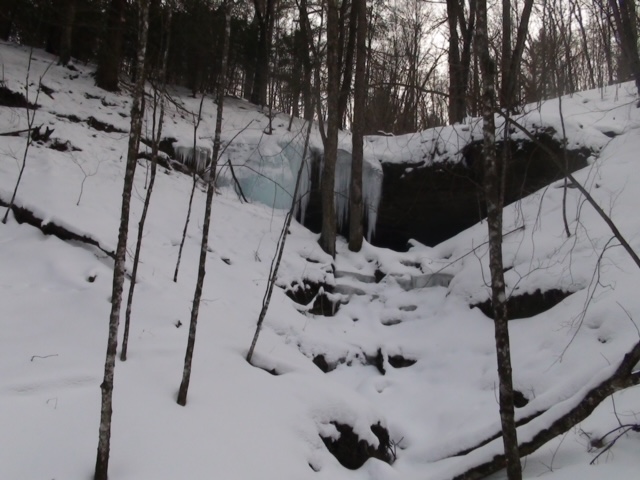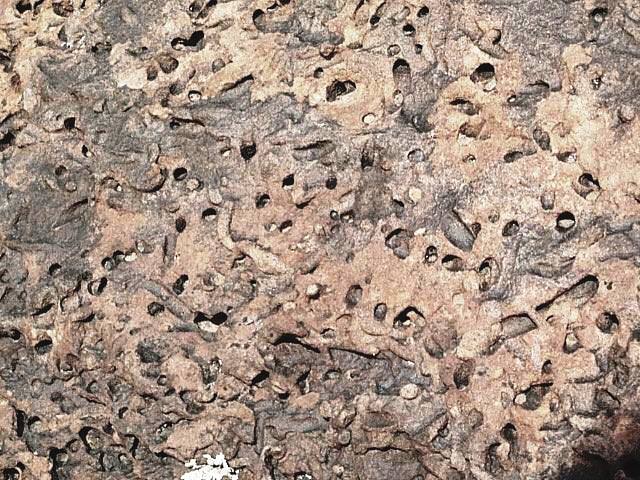It’s 3:30 PM as I stare out the window. The beautiful fairy-land of frost is gone, but the gray hills in the distance are robed in snow—warmed by the afternoon sun. I know these KVR hills. They are miles away; steep and treacherous—covered in loose, new fallen snow and layers of slippery oak leaves. I used to be a hiker…no, John Muir disliked that word…I was instead a saunterer, one who “goes here and there” like a pilgrim in the “holy land.” Then I had hip surgery, and my world got smaller.
Recently I reread an article written 88 years ago this month
by Helen Keller, a remarkable woman who was both blind and deaf. She wrote:
I
asked a friend who had returned from a long walk in the woods, what she had
observed. “Nothing in particular,” she replied. How was it possible, I asked myself, to walk
for an hour through the woods and
see nothing worthy of note?
Healing, especially at my age, is frustratingly slow—bone
and tissue first, with muscle and conditioning lagging, requiring a commitment
to action. Snow shoveling was my
commitment for the day. But I stare at
a small notch of dark hemlocks, low on the hillside far away. I know that place! Its mysterious beauty, its haunting history,
never fails to connect my soul to this amazing land. I am called...
In minutes I am following a wide, snowy trail, already packed
by hundreds of boots. I turn off the
main trail, finding my own path through the brush, now marked only by deer
tracks. It leads down into the steep
valley where the ice-skirted Kickapoo River flows. As I cross the first small tributary, I stop
to listen. The woods seem empty and I am
expecting silence. Not so. The wild cry of a pileated woodpecker echoes
among the bluffs. A crow calls. The river gurgles a response. Falling frost needles whisper past my ears.
I am now in a unique world where time has stood still—holding within it the spirit of the ice ages. When the last glacial ice sheet that surrounded the Driftless Area melted its way north, the sunny hillsides and ridges began a long transition to oak savanna prairies, mixed hardwood and pine forests. But the steeply cut, moist, sandstone ravines—with cool, northern or eastern exposure—allowed a very special community of plants adapted to life on the edge of a frozen world to persist.
 |
| Yellow Birch Bark |
 |
| Blue Bead Lily |
 |
| Partridge Berry |
These microclimates contain the
dark forests of hemlocks, interspersed with yellow birch, Canada yew, and
eastern white pine, along with wintergreen, partridge berry, blue-bead lily,
northern monkshood, and many other species that would normally be found
hundreds of miles further north.
In front of me a rocky, lichen-encrusted cliff thrusts
itself into the river, seeming to block my passage beyond. But I see that the deer tracks continue, and
I know their secret. A nearly invisible
ledge of rock skirts the base of the bluff, providing a safe path to a wild and
beautiful river woodland. Protected from
human traffic by the river to the east and a wall of rock on the other, the
snow is a newspaper of tracks and trails. All manner of animals, small and large, roam this marshy woods. I stand for a while, absorbing the stories around
me. But, today I have a goal: the ice
cave.
I reach a small valley that opens through the nearly continuous wall of rock. Only a careful gaze can see the bit of ice visible in a dark shadow above, not worth the effort to climb. Still, I hobble my way up to the shadow and find that the valley abruptly ends in a shallow half-circle cave. It is 5 to 20 feet in height and 10 to 15 in depth, the whole cave being over 100 feet wide.
Weeping sandstone, dripping in frozen lacework on the back wall…
The steady patter of falling water, a melody echoing from a hidden chamber within the column…
Pale blue-green light filtered through the icy veil…
The rattle of a small rock falling from the ceiling, the
cluttered floor a witness to a process ongoing for thousands of years…
A feeling of safety and protection—a sense of history, of
quiet ghosts of those who may have occupied this snug haven ages ago…
The heady smells of damp rocks, decaying leaves, of muddy
soils…
Tracks of a small animal, barely visible in the twilight, leading
to a dark hole in the far corner…
The ceiling, covered by the holes and impressions of 100s
of fossilized Paleozoic worms…
I am enchanted by these lovely revelations and I admit that I seldom give my senses such full access to my conscious brain. Perhaps I have more worthy things to think about? I continue to recall the words of Helen Keller:
I who cannot see find hundreds of
things to interest me through mere touch, feel the delicate symmetry of a
leaf. I pass my hands lovingly about the
smooth skin of a silver birch, or the rough shaggy bark of a pine. In spring I touch the branches of trees
hopefully in search of a bud, the first sign of awakening Nature after her
winter’s sleep. […and, even as I think of smells, my nose is full of scents
that start awake sweet memories of summers gone and ripening fields far away].
Perhaps John Muir’s origin or definition of a saunterer was
not accurate. Regardless, today I
sauntered to this sacred place, bringing with me my greatest gifts—my
senses. And, it is awareness of these
sensual moments that calls me to explore the world around me more fully, more intimately. It is not just my healing leg that requires
exercise!
Need a little food for your senses and rest from your
emotions? Saunter along the river
through the beautiful Kickapoo Valley Reserve and its sacred places; any day,
any season, just do it!!
A note to our visitors...
We encourage everyone who hikes to the ice formations at the Kickapoo Valley Reserve this winter to be mindful of the fragility of the ice in a season that could see more traffic than usual as folks seek opportunities to get outside. Please remember that the Reserve's intent is to conserve, restore, and maintain the ecology and biodiversity of the Kickapoo Valley Reserve, while balancing access and recreation for visitors. Winter features like the ice formations are a part of this. Please avoid handling the ice and consider taking photos. We love to see photos shared on our social media pages. Thank you for being a part of the community that cares about the Kickapoo Valley Reserve and its many gifts. For more information, visit the Kickapoo Valley Reserve website and consult the Winter Trails Map.







